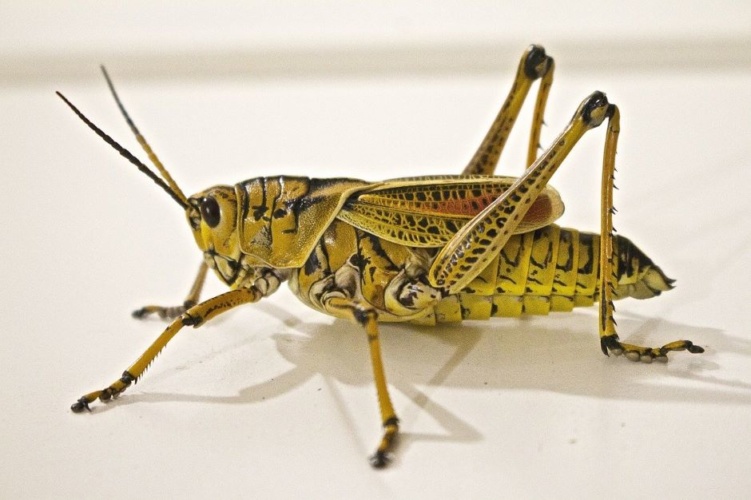
Plagues of locusts are made up of millions of insects that avoid bumping into one another thanks to their inbuilt Lobula Giant Movement Detector (LGMD), a specialised collision avoidance neuron.
Locust brain inspires robot navigation system
According to Darsith Jayachandran, graduate student in engineering science and mechanics at Penn State University, the neuron receives two different signals. An image of an approaching locust falls on the avoiding locust's eye. The closer the invading locust gets, the larger the image and the stronger this so-called excitation signal becomes. The other input is the change in angular velocity of the invading locust with respect to the avoiding locust.
"Because the neuron has two branches, the locust computes the changes in these two inputs and realises that something is going to collide," Jayachandran said in a statement. "So the avoiding locust changes direction."
According to Penn State, the researchers developed a compact, nanoscale collision detector using monolayer molybdenum sulphide as a photodetector. They placed the photo detector on top of a programmable floating gate memory architecture that can mimic the locust's neuron response using only a small amount of energy.
They report in Nature Electronics that this "is a leap forward towards the development of smart, low-cost, task-specific, energy efficient and miniaturised collision-avoidance systems."
According to the researchers, locusts move at two to three miles per hour and make directional changes in hundreds of milliseconds. The decision to move employs non-linear mathematics and miniscule energy expenditure.
This quick reaction and modest energy use is attractive for mechanised collision detectors as current detectors for autonomous vehicles are very large and very heavy. The researchers' collision detector responds in two seconds.
The photodetector causes an increase in device current in response to an oncoming object - the excitatory signal - while the underlying programmable memory stack always causes a decrease in the current, the inhibitory signal. When an object approaches, the excitatory signal is added to the inhibitory stimuli, causing a non-monotonic change in the device current, mimicking the escape response of the LGMD neuron found in locusts.
"While locusts can only avoid collisions with other locusts, our device can detect potential collisions of a variety of objects at varying speeds," said Saptarshi Das, assistant professor of engineering science and mechanics at Penn State.
The researchers have so far tested the device with objects on a direct collision path and the still need to optimise the responses for additional situations.
"We can't do every measurement, every situation," said Aaryan Oberoi, graduate student in engineering science and mechanics. "So we developed a numerical model. We can also test if multiple devices on the same chip would work better. So far, it looks like a single device will be sufficient. However, a multi-pixel collision detector array can offer collision avoidance in 3D space."




Nanogenerator consumes CO2 to generate electricity
Whoopee, they've solved how to keep a light on but not a lot else.